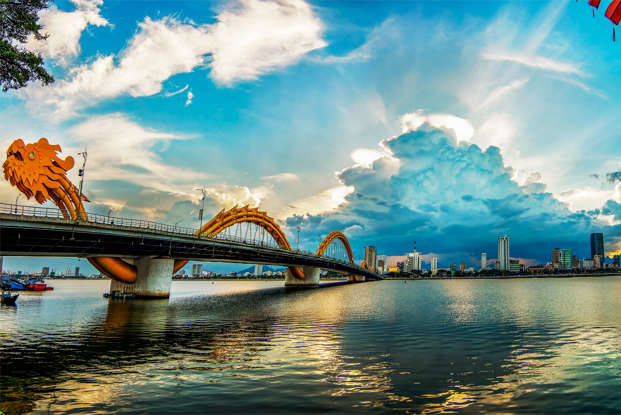Da Nang
Da Nang, a coastal city in the center of Vietnam, is renowned for its white sand beaches, ski slopes, amusement parks, and fantastic street food. The spectacular Golden Bridge can be found in Bà Nà Hills, a hill station and resort to the west of the city. From the resort, a cable car ride is available. The Marble Mountains, a group of five marble and limestone hills with pagodas on top and secret tunnels housing Buddhist shrines, is another popular tourist destination in the city. Da Nang is a charming city with historic sites, French colonial architecture, vibrant festivals, traditional customs, and a wide range of retail possibilities.
1. Explore Marble Mountains
a collection of five hills made of marble and limestone that include significant religious statues
The Marble Mountains are a place of worship with stunning architecture that encompasses both the paths leading up to the mountains as well as the mountains themselves. It is a location that is sacred to the Buddhist and Hindu religions. The caves are exquisitely decorated with towering deities of the two religions that are incredibly colorful and breathtaking. The five fundamental components of Buddhism are represented by the Marble Mountains: Earth, Water, Wood, Metal, and Fire. The Marble Mountains should be at the top of your list if you can only visit one destination in Vietnam during your vacation.
2. Dragon Bridge
Given that it is the longest bridge in the nation and features a stunning light show, Dragon Bridge is a famous location.
The Dragon Bridge is a must-see for anybody traveling to Da Nang, Vietnam. Visitors will enjoy enjoying the splendor of the metropolis at night from this location’s famed lengthy stretch of shimmering lights. The bridge also has a water show so that visitors may take in the scenery.
3. Mỹ Sơn
Travel to a hauntingly spiritual dimension by walking through these temple ruins.
These Hindu temples in middle Vietnam are both stunning and otherworldly despite being half destroyed. These temples were constructed in this location since it used to be the Champa Kingdom’s governmental and religious center for the majority of its existence. Some of the buildings date back to circa 1700. These temples are made of stone pillars and burned brick. Sandstone bas-reliefs that represent episodes from Hindu mythology are used as ornamentation on some of the structures. Sometimes, particularly on gloomy days, the temples appear to float on the air, conjuring the profound spirituality that once flowed through the patrons of the temples.
